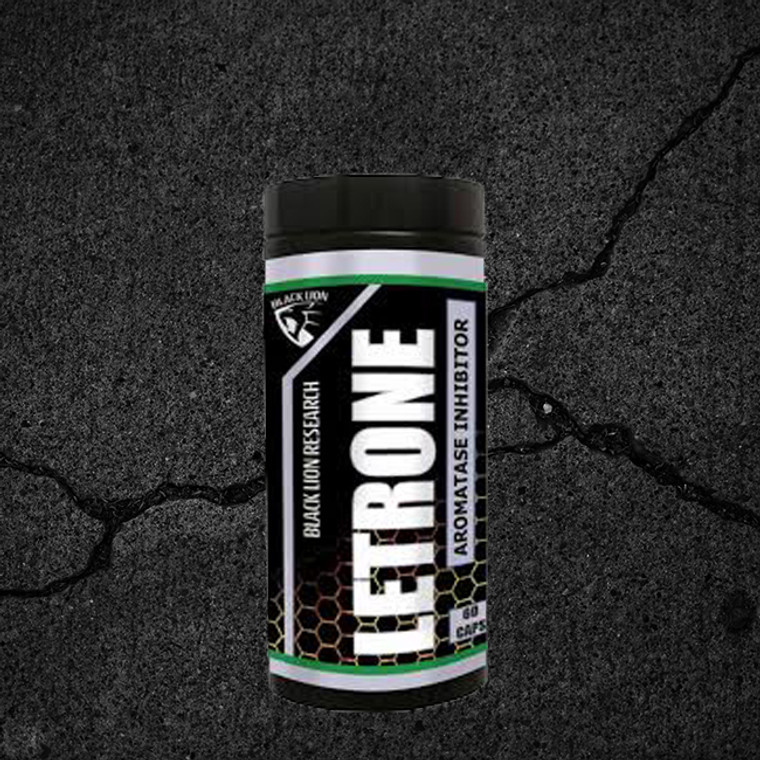Black Lion Research is proud to announce the release of Letrone.
This product is a natural anabolic aromatase inhibitor.
Atractylodes Macrocephala-
Atractylodes macrocephala Koidz (A. macrocephala), a Chinese medicinal herb, has been extensively used to treat digestive diseases in China and most other Asian countries (PPRC, 2005; Lee et al, 2007). Dry rhizomes of A. macrocephala are rich in sesquiterpenes and acetylenic compounds (Endo et al, 1979; Chen 1987; Huang et al, 1992; Lin et al, 1997).
Typical polysaccharides atractan A, B, and C, present in A.
macrocephala, have been reported to exhibit hypoglycaemic activities (Wang et al, 2000; Jia et al, 2003). Although atractylenolide I, atractylenolide II and atractylenolide III are all bioactive substances present in Atractylodes macrocephalae, the majority of research studies carried out in the recent years have focused on atractylenolide II and atractylenolide III (Kang et al., 2011b). Atractylenolide II is a marker substance present in Atractylodes macrocephalae which exhibits well-documented gastrointestinal inhibitory effects and anticancer activity (Zhang et al., 1999; Liu et al., 2005). Atractylenolide II is one of the main constituents present in the effective volatile oil fraction (Li et al., 2001), potentially effective in treating senile dementia. Atractylenolide III is a possible candidate for the treatment of human lung carcinoma (Kang et al., 2011a).
Aromatase inhibition
Primary targets for aromatase inhibition are atractylenolide 1 2 and 3 with atractylenolide 1 being exceptionally strong with 94.5% inhibition.
Abstract: Ten compounds were isolated from the dichloromethane extract of Atractylodes macrocephala and their aromatase inhibiting activities were tested using an in vitro fluorescent-based aromatase assay. The results indicated that atractylenolide I (1), atractylenolide II (2) and atractylenolide III (3) had inhibition ratios of 94.56 ± 0.70%,
90.93 ± 1.41% and 86.31 ± 8.46%, respectively, at a concentration of 10 μM. We conclude from our results that atractylenolide and its derivates may serve as potential aromatase inhibitors (AIs) and thus merit continued study in the future.
FULLTEXT= Screening for Compounds with Aromatase Inhibiting Activities from Atractylodes macrocephala Koidz jourlib.org
Atractylenolides are exceptionally strong aromatase inhibitors that show exceptional oral bioavailability. There are many AIs in nature. During my research I must have found over 100 potentials but unfortunately 99.9999% of them are poorly absorbed orally which limits their potential.
Atractylenolide in contrast is very well absorbed.
Sites-
-"Atractylenolide I is absorbed quite well at all segments of intestine in rats and no specific absorption was founded in different segment."
-"Atractylenolide I can be classified into high penetrating drug.
Passive diffusion dominates the absorptive transport behivior of atractylenolide I. Atractylenolide I can be absorbed in the whole intestinal segments and there is not a preferntial absorption zone in the intestine. The absorption and secretion of atractylenolide I are mediated by the efflux transport system, P-gp."
-"Abstract
The intestinal permeability of three sesquiterpene lactones, atractylenolide I, II, and III, was investigated using the human Caco-2 cell monolayer model. The bidirectional permeability of the three compounds from the apical (AP) to the basolateral (BL) side and in the reserved direction was studied. The three compounds were assayed using HPLC. The P app values of atractylenolide I, II, and III were all at the level of 10 -5 cm / s, suggesting high intestinal permeability and good absorption. The bidirectional transport of the three compounds was
time- and concentration-dependent, and indicated the main mechanism of the passive diffusion of the three compounds across the intestinal epithelium membrane. Moreover, atractylenolide I might be partly actively transported. "
ANABOLIC-
It was a huge loss when Formestane got canned because well....Ais are great but that was also anabolic.
Letrone is a stout AI but it also shows significant anabolic potential by increasing endogenous hormones.
In one animal study growth was increased by 20% compared to control when animals were fed atractylodes macrocephala.
The increase in growth was attributed to increases in- Growth hormone x30%
IGF-1 x52%
T3 x47%
T4 x36%
cAMP x21%
Sites- The Endocrinal Mechanism of Polysaccharide of Atractylodes Macrocephala Koidz on Growth Performance of Weaned Piglets-- "Comparing to the control group,the PAM group increased the average gain weight by 20.72%"
"increased the levels of growth hormone(GH),insulin-like growth
factor-I(IGF-I),3,5,3′-triiodothyronine(T3),3,5,3′,5′-tetraiodothyronine(T4)
and cyclic adenosine monophosphate(cAMP) in serum by
30.77%(P0.05),52.02%(P0.05),47 .60%(P0.05),36.70%(P0.05) and 21.15%(P0.05),respectively.The results indicated that PAM improved the growth performance of weaned piglets through the endocrinal system.Furthermore,it is possible that PAM altered the growth performance of weaned piglets by up-regulating the synthesis and secretion of GH,IGF-1,T3,T4 and cAMP."
Finally, Atractylodes macrocephala potentiates Ghrelin secretion and receptor signaling. Ghrelin increases hunger and Growth hormone secretion.
Now you have not only an exceptionally strong oral AI but one that has serious anabolic potential.


